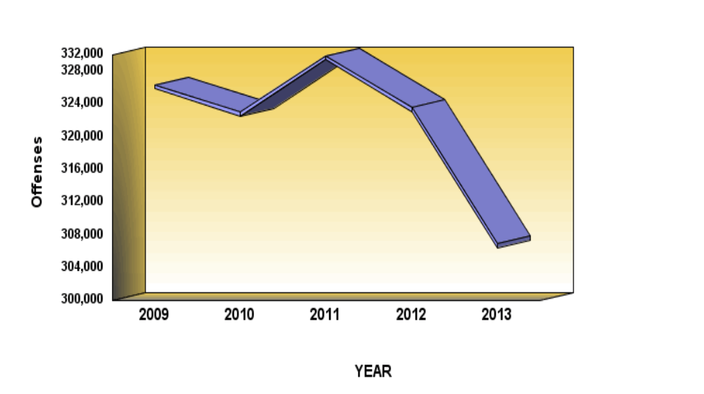Rates of incarceration in the United States are higher than in any other country in the world, yet a new study released by
The Sentencing Project shows that two-thirds of our states are trending toward fewer total prisoners, among them Pennsylvania and New Jersey.
The Sentencing Project, based in Washington, D.C., promotes reforms in sentencing policy and strives to change the way Americans think about crime and punishment. This relationship between crime and incarceration supports one of the pillars of the organization's drive to reduce overall levels of incarceration -- namely, that a lower prison population does not necessarily threaten public safety.
While it might seem intuitive that reducing prison populations would negatively impact public safety – or conversely, that declining crime rates would drive down levels of incarceration – such a relationship has generally been shown to be relatively weak. This is because just as forces beyond crime rates affect incarceration levels, forces beyond incarceration affect crime.
Some of the policies and practices that have driven down incarceration nationwide include changes in sentencing for low-level drug and property offenses and the introduction of diversionary programs that offer treatment or other means of returning to good standing.
A similar report from the Brennan Center for Justice at New York University Law School attributed
falling crime in Pennsylvania to a number of factors, including changes in policing tactics, decreased alcohol consumption, and an aging population. That report concluded that with tighter state budgets -- Pennsylvania spent $2.111 billion on corrections in 2013 -- the state's best course would be to "[prioritize] modern, evidence-based criminal justice policies with a record of success over costly and ineffective over-incarceration."
As the Pittsburgh-Post Gazette reported last June,
rates of recidivism are declining in Pennsylvania as well, supporting the idea that those leaving prison have become less likely to return to a life of crime.
The state of New Jersey, meanwhile, had the highest rate of decarceration relative to its peak year in 1999, with a decline of 28.7 percent. According to the Sentencing Project report, which provides
a closer examination of the top three states of New York, New Jersey and California, the decline in New Jersey was attributable to a combination of front-end reforms reducing sentencing lengths and back-end reforms to the parole system.
In total, the U.S. prison population has declined by 2.4 percent since 2009. Among the 16 states with increasing prison populations relative to their respective peak years, the top five are Arkansas, Nebraska, Kansas, Wyoming and Utah.
With evidence suggesting that decarceration does not produce a feared 'crime wave' in states with fewer people behind bars, the Sentencing Project report shows that economic and rehabilitative gains can be made through a more thorough evaluation of how to conduct justice. Recent federal efforts to reform policing tactics,
both nationally and locally in Philadelphia, could have a positive influence on crime deterrence, increasing public safety and reducing expenditure on a system that may be less effective than improved relations between police and communities.

